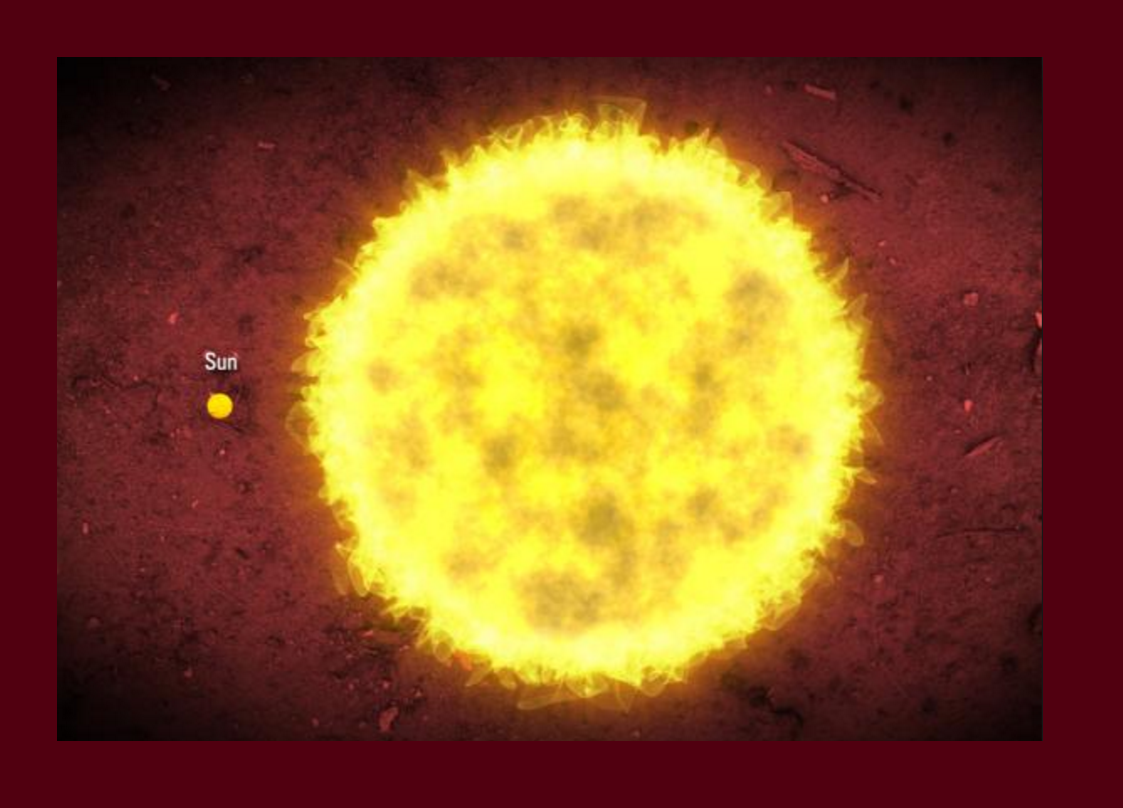
A Perennial Question
What is the biggest star in the universe?
It’s something we all wonder about at some point. After all, we know the Sun is big. Very big. But we also know from astronomical research that there are monstrous spheres of plasma floating out there, beside which our own Sun would seem a mere dust mote.
So, just what is the largest star, and how big is it? It depends on your definition of “big.” In other words, it makes a difference if you want to know what is the most massive star, or what star is the largest by size. Because, oddly enough, the most massive stars aren’t necessarily the largest.

Before we tackle the question, it’s important to understand what type of measuring stick is used to compare stars—and that is, unsurprisingly, the Sun—the star we know and love best. Measurements are made in “solar masses” and “solar radii.” One solar mass = 2 x 1030 kilograms (4.3 x 1030 pounds); and one solar radius = 690,000 km (432,000 mi).
Looking for the Biggest of the Big
Let’s get down to business. Here is a list of the universe’s real stellar whoppers:
- Eta Carinae: One of the most dangerous stars in our galaxy, Eta Carinae—the central luminary of the Carina Nebula—is also one of the most massive, with the primary star estimated to be 120-250 solar masses. But it’s shedding a great deal of mass yearly, so any mass estimates are just a snapshot in time; and, in any case, Eta Carinae will likely blow any day now—in fact, it may have already, though we probably won’t notice for a few thousand years.
- R136a1: This star is truly colossal. It’s a member of a star cluster within the Tarantula Nebula, an immense star formation factory located in the Large Magellanic Cloud. It’s thought to contain anything from 265-320 solar masses, which makes it easily the most massive star known. Like Eta Carinae, R123a1 is not long of this world—give it about a million years, but not much more.

- The First Stars: This is all theoretical, but it’s believed that the very first stars to condense after the Big Bang could have attained masses up to a million times that of the Sun—a consequence of inefficient cooling, since these stars contained hydrogen and little else. Only by accumulating huge masses could these stars achieve the core densities needed to initiate fusion.
But with the possible exception of the First Stars, and despite their great masses, these objects are certainly not the largest stars by size in the universe. Let’s take a look at these behemoths:

- UY Scuti and NML Cygni: The likeliest contender for “largest star in the universe” is UY Scuti. Located 9,500 light-years away, it’s a variable supergiant with an average radius of 1,708 solar radii, which comes out to 2.4 billion km (1.5 billion mi). But this is only an estimate; the margin of error could mean UY Scuti is larger or smaller. Which leaves room for NML Cygni, a red hypergiant over 5,300 light-years away, to possibly steal the show: it could be anywhere between 1,642 to 2,775 times larger than our Sun, which latter estimate would mean it’s easily the largest star in the known universe.
So the most massive star is R136a1, and the largest by size is probably UY Scuti. But that’s just what we know today—stay tuned, because there’s always some new discovery that promises to overturn everything we thought we knew.